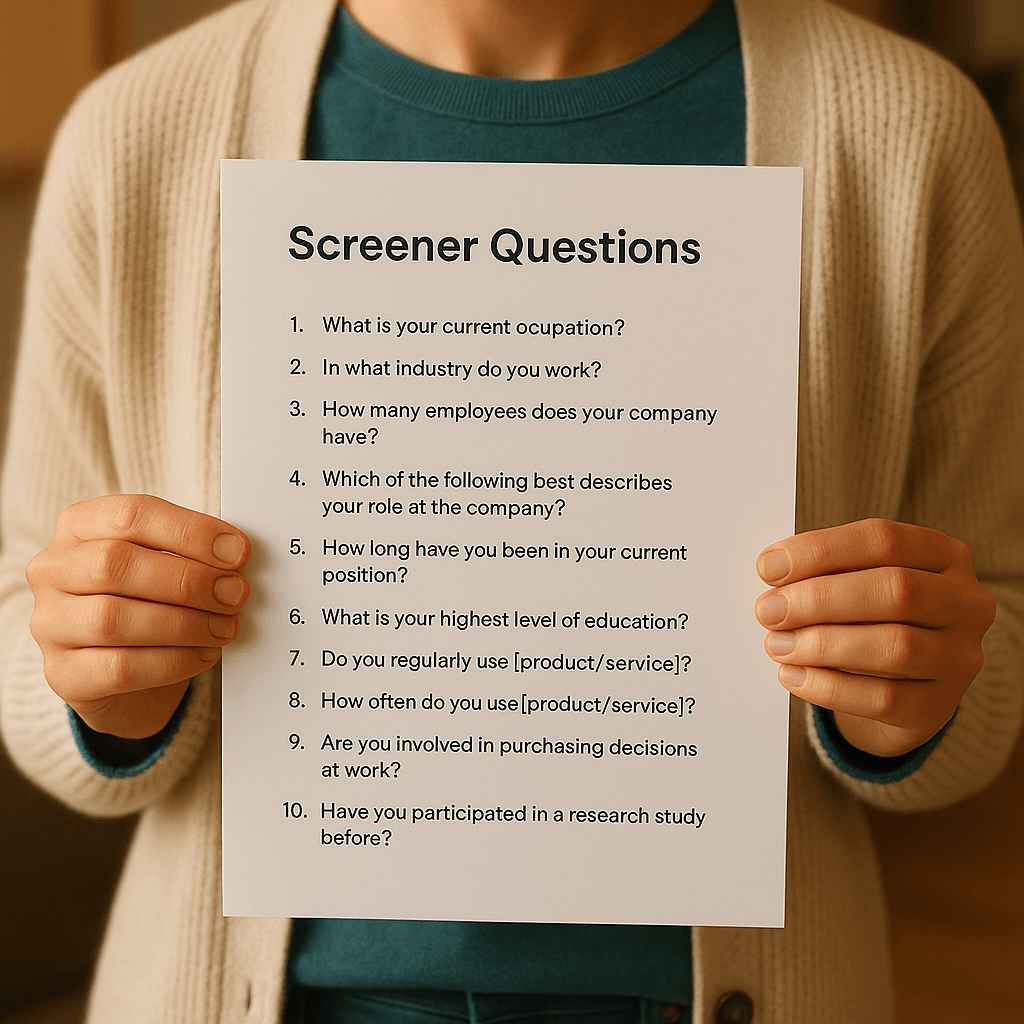Let’s face it: screening is the gatekeeper of your recruitment process. But if your screener questions prompt generic or inflated responses, you’ll waste countless hours on interviews with poor-fit candidates. Most hiring managers share a similar frustration—they can’t reliably spot who’s actually a match.
This guide tackles why conventional screener questions fall short and, importantly, how you can write questions that draw out honest, revealing answers. If you want to stop getting lied to and start surfacing truly qualified applicants, read on.
Why Most Screener Questions Fail—and What It’s Costing You
Hiring teams frequently rely on basic yes/no questions in their screener surveys on sites like Indeed, ZipRecruiter, or internal ATS platforms. These include queries such as:
- “Do you have reliable transportation?”
- “Are you willing to commute 45 minutes?”
A study found that 42% of participants who claimed to have programming skills did not meet the criteria upon further evaluation, highlighting the necessity of well-designed screener questions to accurately identify qualified candidates.
But here’s the problem: if candidates want the job, they’ll say whatever you want to hear. This isn’t about dishonesty—it’s about self-preservation. In a competitive market (and under typical application pressure), who wouldn’t?
The result: wasted time, higher turnover, and frustration with candidates who back out, ghost interviews, or fail to meet basic requirements.
The Real Problem: Easy Questions Invite Easy Lies
When you set up questions where the right answer is obvious, you set yourself up for disappointment. Human nature dictates that people want to present themselves positively—so if the path to the ‘yes’ pile is clear, many will take it.
To get honest responses, you must make honesty simple and faking it hard.
What Works: Indirect Multiple-Choice Questions
The solution? Craft questions so the ideal answer isn’t immediately obvious. This insulates your process from knee-jerk “yes” responses and helps candidates self-select genuinely.
Example:
Suppose you need to know how far an applicant lives from your Costa Mesa location.
| Question Style | Example | Why It Works/Doesn’t |
|---|---|---|
| Bad | Is your commute under 45 minutes? (Yes/No) | It’s easy to guess the “right” answer (Yes). |
| Good | How long will your commute take to our Costa Mesa location for a 9:00 am start? – 0–15 min – 16–30 min – 31–45 min – 46–60 min – 60+ min | Forces honest self-assessment and masks the optimal answer |
Why This Approach Works:
- Candidates can’t easily guess the answer you want, reducing dishonest answers.
- It prompts realistic reflection on logistics—those unwilling to face a long commute may opt out.
5 Screener Questions Most People Write Poorly—And How to Fix Them

Let’s remodel the most common screening questions you’ll find on almost every application.
1. Transportation Reliability
Old way: Do you have reliable transportation to get to work?
Better way: How do you plan to get to work each day?
- I have my own car
- I use public transportation
- I share a ride
- I borrow a car
- Other: [open field]
Why it works: Reveals how much control the candidate actually has over their commute, allowing you to filter out those with a less certain arrangement.
2. Work Eligibility
Old way: Are you legally eligible to work in the U.S.?
Better way: What best describes your current work authorization status?
- U.S. citizen or permanent resident
- I have a valid work visa
- I do not currently have work authorization
Why it works: Encourages more precise, honest responses with less legal risk for you.
3. Work Schedule Alignment
Old way: Are you available Monday to Friday from 9 am to 5 pm?
Better way: Which of the following best describes your availability?
- I’m fully available M–F, 9–5
- I’m available most weekdays with some conflicts
- I’m only available part-time or weekends
- My schedule varies
Why it works: Offers a realistic look at scheduling conflicts, helping you compare candidates more effectively.
4. Job Commitment
Old way: Can you commit to this job for 6+ months?
Better way: How long are you looking to stay in your next role?
- Less than 6 months
- 6–12 months
- 1–2 years
- 2+ years
Why it works: Identifies who sees this role as a stepping stone—and who actually plans to stay.
5. Physical Requirements
Old way: Are you able to lift 50 lbs?
Better way: Our team members occasionally lift up to 50 lbs. Which describes your comfort level?
- No problem, I do that now
- I’m comfortable with it
- I’d prefer a role without lifting
- That’s a dealbreaker for me
Why it works: Communicates expectations clearly and lets candidates opt out, minimizing future issues and attrition.
5 Best Practices to Get More Honest, Useful Answers

Success isn’t just about which screener questions you ask, but how you ask them. The following proven approaches will make your screening far more effective:
1. Use Behavioral Anchors
Don’t: Ask vague character questions like “Are you dependable?”
Do: Tie your question to real-life situations. For example, instead of “Are you dependable?” try: “In your last job, how many times were you late in a typical month?” (Provide ranges for answers.)
Behavioral anchors force candidates to recall their actual experiences, rather than make aspirational claims.
2. Mix in a Few Easy Wins
Start your screener with a couple of straightforward, non-dealbreaker questions. This lowers the candidate’s guard and normalizes honesty—building trust before you get to sensitive topics.
3. Avoid Binary Questions
Simple Yes/No questions rarely deliver insight. Use ranges, categories, or scenario-based responses that tell you more about the applicant’s real experience.
4. Don’t Signal What You’re Looking For
It’s tempting to hint at what you want, but if it’s obvious, candidates will default to the “right” answer. Balance your multiple-choice options so they all sound reasonable—no answer should stand out as the obvious winner.
5. Test and Tune
Share your screener with current employees and honest colleagues. If everyone picks exactly what you want to hear, you’re telegraphing. Adjust your language and answer sets until you see a more natural distribution.
Sample Screener Question Table
| Competency | Poor Example | Better Example |
|---|---|---|
| Dependability | Are you dependable? | How many times were you late to work last month? (0, 1-2, 3-4, 5+) |
| Detail Orientation | Are you good with details? | In your last job, how often did you catch mistakes in your work? (Never, Rarely, Occasionally, Frequently) |
| Team Collaboration | Are you a team player? | When working on a team project, what role do you most often take? (Leader, Supporter, Coordinator, Other) |
Enhancing Screening with Assessment Tools
Combining well-crafted screener questions with digital assessment tools will streamline your initial filtering and ensure better hiring outcomes. For example, platforms with built-in Employee Assessment Software allow you to quickly evaluate soft skills, job fit, and cognitive abilities alongside your custom screeners. Integrating features like Candidate Scorecards further standardizes your review process and helps your team align quickly on the best-fit applicants.
For more insights on structuring assessments and scorecards, check out our articles on How to Assess Work Ethic in the Recruitment Process, How to Leverage Candidate Ratings and Scorecards for Better Decisions, and Improve Hiring Outcomes by 70%: 5 Science-Based Candidate Assessment Strategies.
The Bottom Line: Structured Screening is Your First Line of Defense
A thoughtful screening process, grounded in clear, indirect, and scenario-based questions, is your best filter for surfacing strong candidates and avoiding wasted time down the road. Remember:
- Poor screener questions lead to dishonesty and bad-fit hires.
- Use indirect, behavioral, and multiple-choice questions to encourage honesty.
- Test, tweak, and validate your questions regularly.
- Where possible, enhance screening with digital tools to automate scoring and reduce bias.
If you’re struggling with a glut of unqualified or non-committal applicants, reconsider how you’re screening—not just who you’re screening. The candidates haven’t changed, but your questions can.
Ready to improve your screening process and make better hires? Schedule a free demo with our hiring experts and get practical guidance tailored to your unique needs: Book a free demo.




